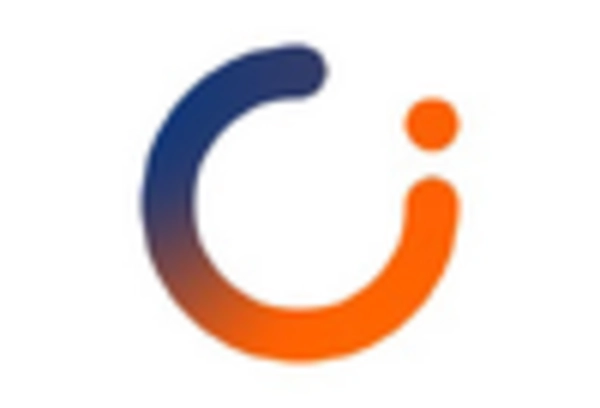Expansion of Remote Work Capabilities
The shift towards remote work has significantly impacted the Construction Design Software Market. As teams become more geographically dispersed, the need for software that supports remote collaboration and communication has intensified. Cloud-based design tools enable real-time updates and access to project data from anywhere, fostering greater flexibility and efficiency. Recent surveys indicate that 70% of construction professionals prefer using cloud-based solutions for project management. This trend suggests that the Construction Design Software Market will continue to evolve, with an increasing emphasis on tools that facilitate remote work and enhance team collaboration.
Increased Focus on Safety and Compliance
Safety and compliance regulations are paramount in the construction industry, significantly influencing the Construction Design Software Market. As regulatory frameworks evolve, construction firms are compelled to adopt software that ensures adherence to safety standards and building codes. The integration of compliance features within design software not only mitigates risks but also enhances project credibility. Recent statistics indicate that non-compliance can lead to substantial financial penalties, thus incentivizing firms to invest in reliable design software. This trend underscores the importance of incorporating safety protocols into the design process, further propelling the growth of the Construction Design Software Market.
Rising Demand for Efficient Project Management
The Construction Design Software Market experiences a notable surge in demand for efficient project management solutions. As construction projects become increasingly complex, stakeholders seek software that enhances collaboration, scheduling, and resource allocation. According to recent data, the construction sector is projected to grow at a compound annual growth rate of 5.4% through 2027, driving the need for advanced design software. This growth is likely fueled by the necessity for timely project delivery and cost management, compelling firms to adopt innovative software solutions. Consequently, the Construction Design Software Market is witnessing a shift towards integrated platforms that streamline workflows and improve overall project efficiency.
Adoption of Building Information Modeling (BIM)
Building Information Modeling (BIM) has emerged as a transformative force within the Construction Design Software Market. BIM facilitates a collaborative approach to design, allowing stakeholders to visualize and simulate projects before actual construction begins. This technology enhances accuracy, reduces errors, and fosters better communication among teams. Recent studies suggest that the adoption of BIM can lead to a 20% reduction in project costs and a 30% decrease in project timelines. As more firms recognize the benefits of BIM, the demand for compatible design software is expected to rise, further driving the growth of the Construction Design Software Market.
Growing Emphasis on Sustainable Construction Practices
Sustainability has become a critical focus within the construction sector, influencing the Construction Design Software Market. As environmental concerns escalate, construction firms are increasingly seeking software that supports sustainable design practices. This includes features that optimize energy efficiency, reduce waste, and promote the use of eco-friendly materials. Recent data indicates that the green building market is anticipated to reach USD 1 trillion by 2030, highlighting the potential for software that aligns with these sustainable goals. Consequently, the Construction Design Software Market is likely to see a rise in demand for tools that facilitate environmentally responsible design.


















Leave a Comment